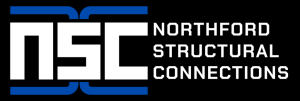Key Features of DTFC Flexible Connections Explained
In the realm of modern mechanical engineering, the significance of flexible connections cannot be overstated. Among various solutions available, DTFC (Dynamic Torsional Flexible Couplings) stands out due to its specialized features tailored for demanding applications. This article delves into the key features of DTFC flexible connections and how they enhance performance in various industries.
Understanding Flexible Connections
Before exploring DTFC, it is essential to comprehend what flexible connections are. These components are designed to transmit torque between rotating shafts while accommodating misalignments and vibrations. Their ability to flex under load protects equipment, reduces wear, and enhances overall operational efficiency.
Key Features of DTFC Flexible Connections
1. Enhanced Misalignment Capacity
One of the key features of DTFC flexible connections is their superior capacity to handle misalignments. In many industrial settings, shafts are not perfectly aligned. DTFC couplings can easily accommodate angular, parallel, and axial misalignments. This flexibility minimizes stress on connected components, prolonging the lifespan of machinery.
2. Vibration Damping
DTFC connections are specifically designed to absorb shocks and damp vibrations. In environments where heavy machinery operates, vibrations can lead to catastrophic failures. DTFC’s innovative design minimizes the transmission of these vibrations, ensuring smoother operations and protecting valuable assets.
3. High Torque Transmission
DTFC flexible connections are engineered to handle high torque applications effectively. They maintain the integrity of the connection under heavy loads, maximizing the performance of the entire system. This feature is crucial for industries where torque spikes are common, such as mining and manufacturing.
4. Material Durability
The materials used in manufacturing DTFC are of high quality, enhancing their durability. These connections are built to withstand extreme conditions, including temperature fluctuations and exposure to corrosive substances. This durability means reduced maintenance costs and less frequent replacements, which adds to overall operational efficiency.
5. Customization Options
Another significant feature of DTFC flexible connections is the option for customization. Depending on specific applications, users can choose from a variety of sizes, shapes, and stiffness options. This adaptability ensures that each connection is suitable for its unique working environment, enhancing performance and efficiency.
6. Easy Installation and Maintenance
Ease of installation is a crucial aspect of DTFC flexible connections. Their design facilitates quick and straightforward installation, reducing downtime during setup. Additionally, maintenance is minimal compared to rigid connections, making it easier for operators to keep their systems running smoothly.
7. Response to Dynamic Loads
DTFC connections are highly responsive to dynamic loads. Their flexibility allows them to adapt quickly to changing operational conditions, which is particularly beneficial in applications where load conditions vary significantly. This responsiveness helps prevent mechanical failures and ensures consistent performance.
Applications of DTFC Flexible Connections
Understanding the versatility of DTFC flexible connections requires examining their applications across various industries.
1. Automotive Industry
In the automotive sector, DTFC’s ability to handle misalignments and absorb vibrations makes them ideal for powertrain applications. They can be integrated into drivetrains, providing a reliable connection that enhances vehicle performance and durability.
2. Manufacturing
The manufacturing industry utilizes DTFC connections in conveyor systems and machinery. Their robustness and vibration-damping capabilities contribute to smooth operations in high-output environments, reducing wear and tear on equipment.
3. Mining and Heavy Equipment
DTFC flexible connections find extensive use in the mining sector, where heavy machinery operates under high torque and varying loads. They ensure reliable performance while safeguarding equipment from the harsh operational environment.
4. Marine Applications
In marine applications, DTFC connections are essential for engine and propeller systems. Their durability and resistance to corrosion make them suitable for challenging marine environments, ensuring the longevity of the equipment.
Conclusion
DTFC flexible connections present numerous advantages in various industrial applications. Their key features, including enhanced misalignment capacity, vibration damping, and high torque transmission, establish them as a preferred choice for engineers and operators alike. As machinery becomes more intricate and operational demands increase, the role of DTFC flexible connections in ensuring efficient and reliable performance will only grow in importance.







